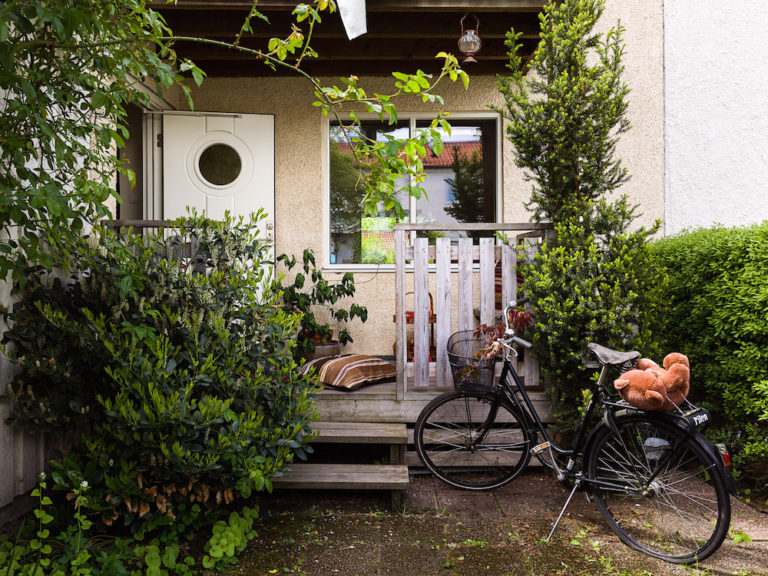Riding Out the Storm: 10 Supplies Needed for a Hurricane Every Home Should Have
Around five hurricanes strike the US coastline every three years. Of these five, an average of two will be major hurricanes, classified as category 3 or above on the Saffir-Simpson Hurricane Scale.
But four category 4 hurricanes of 130 mph-plus – Harvey, Irma, Michael, and Maria – have hit the US in the past two storm seasons, the most in 150 years of records.
Whether you’ve been affected by these recent hurricanes or not, they highlight the need to prepare for the approaching hurricane season.
Read on to find more about out the supplies needed for a hurricane and how to prepare if the worst happens.
Hurricane Emergency Supplies Checklist
No matter where you live in the US, it’s wise to have an emergency kit or two. But they’re an absolute necessity if you live in an area frequented by hurricanes.
When the media issues a hurricane warning, people tend to run for the stores. By having a basic disaster supply kit on hand, you can avoid having to dash out. Instead, you can focus on other forms of hurricane prep like bringing in outdoor furniture and going through evacuation routes with your family.
Here are ten essential items for your hurricane kit:
Bottled Water
Floods and power outages from hurricanes can cut off water supplies. Even if you still have access to running water, hurricanes can cause contamination, making tap water unsafe to drink. And, although you can boil tap water to make it potable, this may not always be possible during a hurricane.
As such, a supply of bottled water for your family is one of the most essential hurricane preparation items. Current guidelines recommend a supply of one gallon of bottled water per person per day for at least three days. So, if you are a family of four, you’ll need a minimum of 12 gallons of bottled water.
This is more than enough to provide every family member with the recommended half a gallon per day of drinking water for a period of 72 hours, as well as extra for sanitation.
Non-Perishable Food
You’ll also need a supply of non-perishable food to ensure hurricane readiness for your whole family. Again, aim for enough food to last you all at least three days.
This should be food you don’t have to refrigerate or cook. And, if possible, it’s best to stock up on food that needs zero preparation, meaning nothing you need to rinse or mix.
Some ideal emergency kit foods include:
- Canned vegetables – baked beans in tomato sauce are ideal as you can eat these straight from the can
- Canned fruit in juice
- Canned meats and fish, such as corned beef, tuna, sardines, and mackerel
- Boxed breakfast cereals
- UHT or plant-based milk
- Crackers
- Protein bars
- Peanut butter
Remember, when stocking up on canned food, look for cans with ring pull openings. But pack a manual can opener in your supply kit as well, just in case a ring pull breaks.
Lighting Supplies
Hurricane Michael plunged 1.7 million homes and businesses across six states into darkness. As such, it’s crucial to have several means for your family to move around in safety should your home lose power.
Synchronous generators are the best option as they provide off-the-grid power and are more efficient than a single generator.
But it’s also a good idea to include a flashlight and either candles or fuel lights in your hurricane kit as back-up options. And, don’t forget the means to light them, with a supply of several lighters as well as matches in a waterproof container.
Radio
Radio is essential to receive emergency information and stay informed about ongoing weather conditions and evacuation alerts. After all, without power, your cell phone and computers will be useless within hours and your internet signal could well be down.
And, since the best emergency radios can often be powered by different means, including AA batteries and a hand crank, they’re far more reliable than cell phones.
Spare Batteries
A supply of spare batteries is a must for your kit as a means to power your flashlight, radio, and any other battery-operated items. And, since batteries can be difficult to locate without power, it makes sense to keep them within your hurricane emergency kit.
Home Repair Tools and Materials
It’s a good idea to have a basic selection of tools and materials in your emergency kit should you need to reinforce your home immediately before or during a hurricane.
These items should include heavy plastic sheeting, plywood, a hammer, duct tape, nails, and a wrench. The wrench is also useful for turning off utilities if necessary.
Whistle
A whistle serves as a means to signal for help should you and your family be involved in an emergency rescue situation. Three blasts from a whistle is the internationally-recognized distress signal.
First-Aid Kit
A basic supply of first-aid materials will ensure that you can easily deal with any minor injuries that might occur. Your kit should include items such as gauze, bandages, sterile gloves, burn ointment, pain relievers, tweezers, and scissors.
And, if anyone in your household regularly uses prescription medications, you’ll also need to include these in your hurricane supplies.
Personal Sanitation Supplies
Depending on how severe a hurricane is, you and your family might be forced to take shelter in one part of the house without access to the bathroom. As such, having a supply of toilet paper, wet wipes, and garbage bags on hand for personal sanitation might be more essential than you anticipated.
Important Documents
You don’t want to be searching around for important documents such as insurance policies, bank records, or identification when the hurricane warning comes.
Prepare ahead of time by keeping paper copies of everything in a waterproof, portable container within your supply kit. These will serve as back-up options if you lose the originals and any electronic copies.
Considerations for Your Hurricane Emergency Supply Kit
Now you know what basics everyone should include in their kit, it’s time to consider whether your family might require additional items, as well as how best to store your kit for optimum hurricane emergency preparedness.
Additional Emergency Items
You and your family might have unique needs that require additional emergency items. For example, if you have pets, a baby, or seniors at home, you’ll need to adjust your list of essentials accordingly.
Some extra items you might need to include are:
- Diapers, infant formula, wipes, bottles, and diaper rash cream
- Pet food and a supply of water for your pet
- Spare glasses and contact lens solution
- Blankets or sleeping bags
- Pens and children’s activity books
Go through the list with your family to make sure it includes everything you all need to stay comfortable and safe for around 72 hours.
Storage Precautions and Maintenance
Once you’ve gathered all your items, you’ll need to assemble your kit. You should store everything in airtight plastic containers and then put your entire hurricane emergency kit in one or two easy-carry containers, such as waterproof duffel bags or plastic bins, for example.
You’ll also need to maintain your kit so that it’s ready to go if you ever need it. Before packing up your kit, make a note of what’s inside as well as all the expiration dates. That way you can check your list rather than having to open your kit and go through it.
In addition, you should take these storage precautions:
- Keep your kit in a cool dry place – this will ensure any canned food among your supplies lasts even longer
- Store boxed food in tight plastic containers
- Check and replace any bulging or dented cans. Dents can create small openings that carry a risk of botulism while a bulging can is a sign that air is trapped inside
- Replace expired items as needed – remember to check the expiration date of your bottled water and medications too
- Revise and update the contents of your kit to reflect any changes in your family’s needs
Remember to keep your household hurricane emergency kit in a designated place that’s easy to access. You should also make sure that all family members know where to find it.
Ensure You Have All the Supplies Needed for a Hurricane
Now you know the exact supplies needed for a hurricane as well as how to store them, there’s no excuse for not being prepared this hurricane season.
After all, while we all hope that the worst doesn’t happen, having an emergency supply kit on hand could make all the difference to you and your family if it does.
Enjoy this article? Check out the rest of our blog for some more helpful tips!






